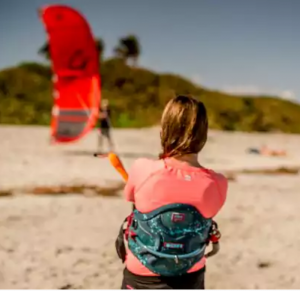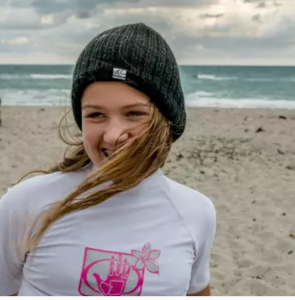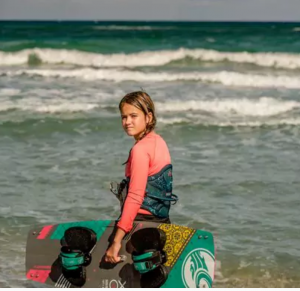It was a light wind condition with about 10 to 12 knots coming from the north west.
Lenka used her 11 meter 2017 F1 kite and a large 165cm board made for light wind conditions.
We went thru the entire procedure of explaining the wind and the wind window, kite safety and her kite’s safety control system, setting up her kite, flying and steering the kite, body dragging, powers strokes and eventually water starts with Lenka.
A real problem I noticed with Lenka (I think she did a lot of self learning) was the way she was holding the bar (hands to far apart) This cause over steering the kite. Also taking one hand of the bar and not moving the other hand right away to the centre of the control bar causes flying the kite with lots of speed to one side of the wind window or to the other.
The recommendation: Either keep both hands on the bar (even in a crash, with both hands on the bar it is easier to keep the kite under control) or best to take both hands off. The kite then will de-power and just fall in the water. One hand on the bar will cause the kite to accelerate and fly fast towards the water and will crash hard. A LE explosion or serious damage to your kite’s canopy could be the result.
Also she had done some water starts b4 … A typical problems for newer students is when the get on the board the will lean away from the kite and cause too much drag (I call it the dolphin look) to actually get going. The front of the board comes up high and the rear of the board is deep in the water. Dolphin head is up above the water and the tail is in the water…u know…lol
We do not lean away nor towards the kite rather we have to lean away from our board… sideways to riding direction. Shoulders back, front foot is slightly straight back foot is slightly bent. Our harness hook is the closest to the kite on us while riding. Most board pressure comes from our heels. Most of the pressure on the board comes from our rear foot heel. I would say about 60% rear and 40% front heel. Curling up your tows always helps creating heel pressure on the board and allows us to go sideways rather then skipping downwind or get pulled downwind by the kite.
Another serious problem newer rider encounter is that the power stroke is not deep enough to the water. When a new rider will try a water start they want to get on the board every time the try a water start. Make sure your body board and kite are always aligned with each other. Body,Board,Kite Also very important to understand your kiting direction.Do not attempt a water start unless you are sure you are in the correct riding direction. Crosswind…
You know the drill. With less experience we need to learn how to gage the power of the wind. Start with a smaller power stroke Lets say from 12 to 2 riding to the right or from 12 to 10 to the left and if you don’t get on the board increase to 2:30 or 9:30. Very important to through your head and shoulders forward (towards your control bar) at the moment the kite fly’s towards the water on a power stroke By doing this we bring our board under our body and start planing easier. Keep knees bent. Point the front of the board slightly downwind for easier planing and not to get pulled over the board by the kite. After the board is on a plane point the board crosswind and eventually up wind. Depending how much wind we have at the time will determine how many power stroke we have to do before we start planning. After we start riding we keep our kite 45 degrees in front of us. It is called steady pull. At this time you can stop flying the kite and keep the kite at a spot of the wind window. To the right this is 1:30 and to the left 10:30 in our wind window. To control the speed: reduce speed by flying the kite higher in the wind window to increase speed fly the kite lower in the wind window. Also by pointing our kite board upwind will decrease speed pointing the board down wind will increase the riding speed. Sheeting in our out our control bar will also help to control riding speed. While riding, letting our front hand go allows a rider to point his or her shoulders and hips more upwind and will increase upwind riding ability.
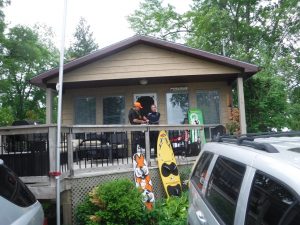
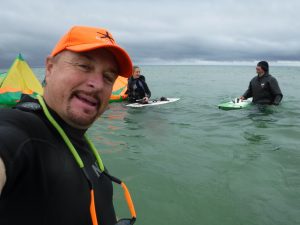
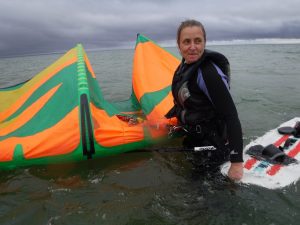
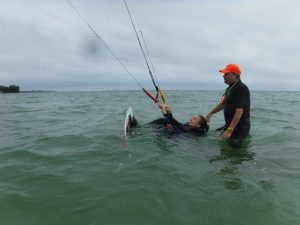
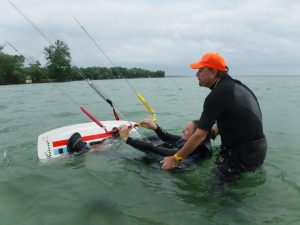

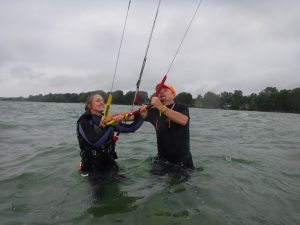
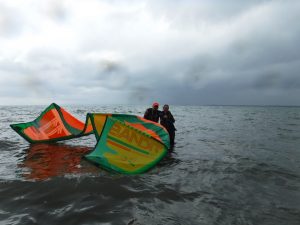
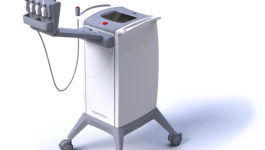
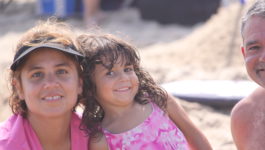
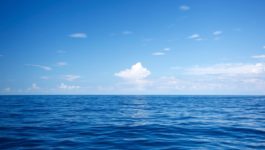
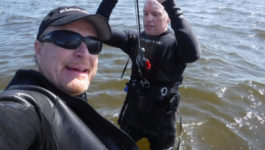

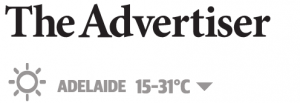
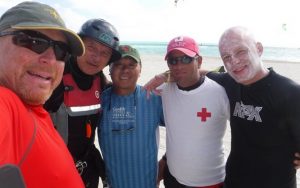 Great day with the guys on the beach!
Great day with the guys on the beach!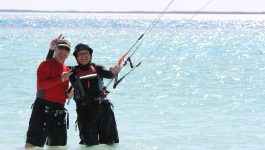
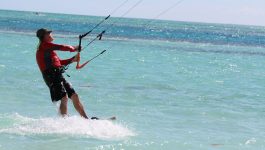
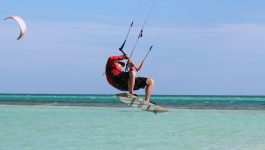
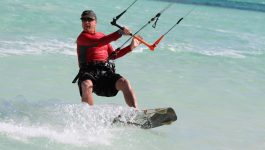
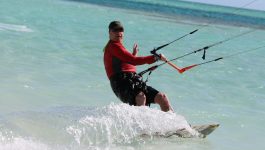
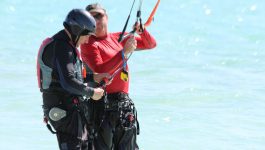
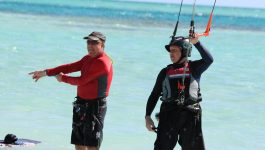
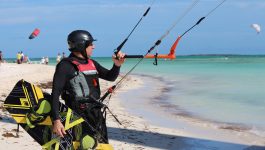
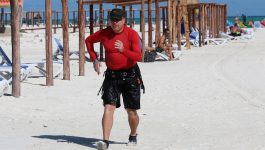
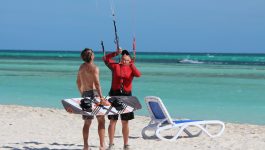
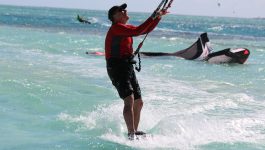
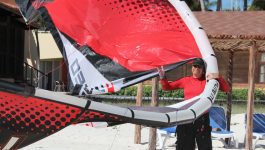
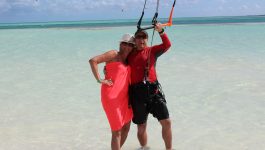
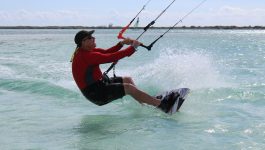
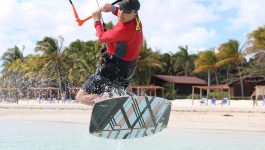
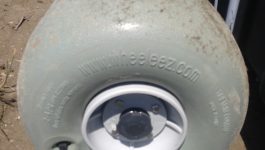
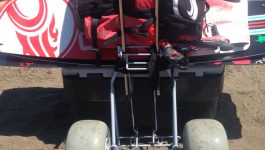
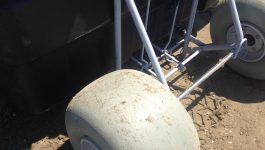
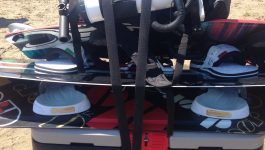




 We haven’t arranged for transportation yet so depending on how our guests want to travel, we will rent a van (or 2) or a bus that we will split evenly with each passenger. Of course, you can make your own way down there in by flying into Norfolk airport and renting your own vehicle, drive your own vehicle or carpool with another guest or 2 or 3… we’ll help to coordinate all this
We haven’t arranged for transportation yet so depending on how our guests want to travel, we will rent a van (or 2) or a bus that we will split evenly with each passenger. Of course, you can make your own way down there in by flying into Norfolk airport and renting your own vehicle, drive your own vehicle or carpool with another guest or 2 or 3… we’ll help to coordinate all this
